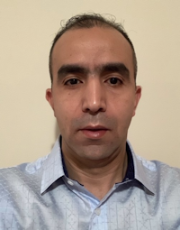We previously showed that Salmonella SseK1 also display intra-bacterial activity that targets bacterial enzymes to enhance their catalytic activity and consequently allows increased resistance to stress conditions. We recently found that SseK1 targets two transcriptional factors, NagC and CRP that control amino sugar metabolism and catabolic repression genes respectively. The proposed grand aims to further elucidate the pleotropic role of SseK1 within the bacterium and characterize the physiological significance of the NagC and CRP glycosylation by SseK1. We will use transcriptomic (RNAseq), transcription reporter assays, biophysical approach (surface plasmon resonance) and animal infection studies to address this big question.
Former Projects - Year 3
Rational design of live-attenuated vaccines for flaviviruses.
 Dr. Yan-Jang (Scott) Huang, College of Veterinary Medicine
Dr. Yan-Jang (Scott) Huang, College of Veterinary Medicine
The objective of the proposed study is to develop broadly effective attenuation strategies for the rational design of live-attenuated vaccines (LAVs) against flaviviruses. Pathogenic flaviviruses cause severe human diseases such as hemorrhagic fever and encephalitis. The use of two legacy vaccines, yellow fever virus (YFV) 17D and Japanese encephalitis virus SA14-14-2, has demonstrated how immunization can be an efficient strategy for disease control. However, the empirical approach used for the development of these LAVs has proven ineffective in producing candidate LAVs for other flaviviruses, thereby demanding new strategies for rational vaccine design. Previously, the rational design of flavivirus LAVs was based on the introduction of mutations that lead to attenuated phenotypes observed in the two legacy vaccines and other attenuated mutants. This failed to produce broadly effective attenuation concepts, because the mutagenesis targets lacked conserved sequences or interacted with diverse host molecules.
A major challenge in designing LAVs is the field’s limited knowledge of flavivirus virulence mechanisms. Target genes that contain consensus sequences, functionally important for the virulence of different flaviviruses, are yet to be identified. In this study, the PI will develop two attenuation strategies by interfering with the interdomain movements of flavivirus envelope (E) proteins. Interdomain movements of E proteins are universally conserved mechanisms in all flaviviruses and critical for viral membrane fusion and virion assembly; they are controlled by highly conserved sequences in two sets of interdomain peptides, the envelope protein domain I (EDI) – envelope protein domain II (EDII) hinge and the EDI – envelope protein domain III (EDIII) linker.
The central hypothesis is that conserved residues in the interdomain peptides are functionally important for flavivirus virulence, regardless of their tissue tropism and disease pathogenesis. To remove virulence determinants in the two interdomain peptides, mutagenesis analyses will be conducted in the following two specific aims: In Aim 1, highly conserved hydrophobic residues will be mutated to interfere with the hydrophobic interactions that contribute to EDI-EDII hinge structure and functions; in Aim 2, the structures and functions of EDI-EDIII linker will be disrupted by removing functionally important side-chains of conserved residues and inserting additional glycine/prolin residues to increase peptide flexibility. Broadly effective attenuation strategies will be developed by engineering selected mutations into the full-length complementary DNA infectious clones of two model flaviviruses, West Nile virus and YFV, and then demonstrating the loss of virulence in respective mouse models.
The completion of the proposed study will lead to an advancement in knowledge regarding the functional importance of the EDI-EDII hinge and EDI-EDIII linker interdomain regions for flavivirus virulence. The results of this study are expected to provide the basis for broadly effective attenuation strategies for pathogenic flaviviruses and facilitate the rational design of future candidate flavivirus LAVs.
Characterization of the impact of Salmonella SseK1 on bacterial gene regulation.
Dr. Samiri Elqaidi, College of Veterinary Medicine
SseK and NleB are bacterial type three secretion effectors and key virulence factors with glycosyltransferase activity that targets host proteins to down regulate host inflammatory pathways. Bacterial strains lacking SseK/NleB are significantly attenuated in virulence and are quickly cleared by the host.
By conducting the proposed experiment of this project, we expect to provide novel insights to the field regarding strategies acquired by pathogens during evolution to coordinate virulence and bacterial global gene regulation. Exploring the multiple functionality of virulence genes in general and SseK1 in particular will certainly help to design new anti-bacterial therapeutics as alternative to antibiotic therapy.
Host and aquatic environment dependent cost and benefits of the Shigella flexneri virulence plasmid and Shiga toxin production.
 Dr. Thomas Platt, College of Arts & Sciences
Dr. Thomas Platt, College of Arts & Sciences
Many emerging infectious diseases maintain significant populations outside of host environments. The consequences of dynamics occurring in these environmental reservoirs on the pathogenesis of these pathogens is seldom investigated and poorly characterized. This project examines how the molecular systems that facultative pathogens use to exploit hosts are shaped by the consequences of dynamics occurring within both host and environmental reservoir environments. Specifically, the researchers aim to test the hypothesis that context dependent costs and benefits result in selective dynamics within aquatic environments that lead to loss of Shigella flexneri virulence plasmid encoded virulence factors while promoting the maintenance of chromosomally encoded Shiga toxin production. The researchers will use a combination of competition experiments to measure the costs and benefits of pINV virulence plasmid carriage and virulence regulon expression in both host and aquatic environments. Further the researchers will determine how Shiga toxin expression in host and aquatic environments influences the fitness of pathogenic Shigella. Finally, the researchers will test predictions with respect to the evolutionary dynamics of both pINV encoded and Shiga toxin virulence factors using an experimental evolution approach. The researchers predict that increased duration of bouts of selection within aquatic reservoirs will result in the spread of non-invasive Shigella while the presence of Tetrahymena thermophila predation in these reservoirs will result in increased Shiga toxin production. The proposed work will determine the context dependent fitness consequences of Shigella virulence factors and determine whether selection in environmental reservoirs may contribute to the recent emergence of novel Shiga toxin producing Shigella pathogens.